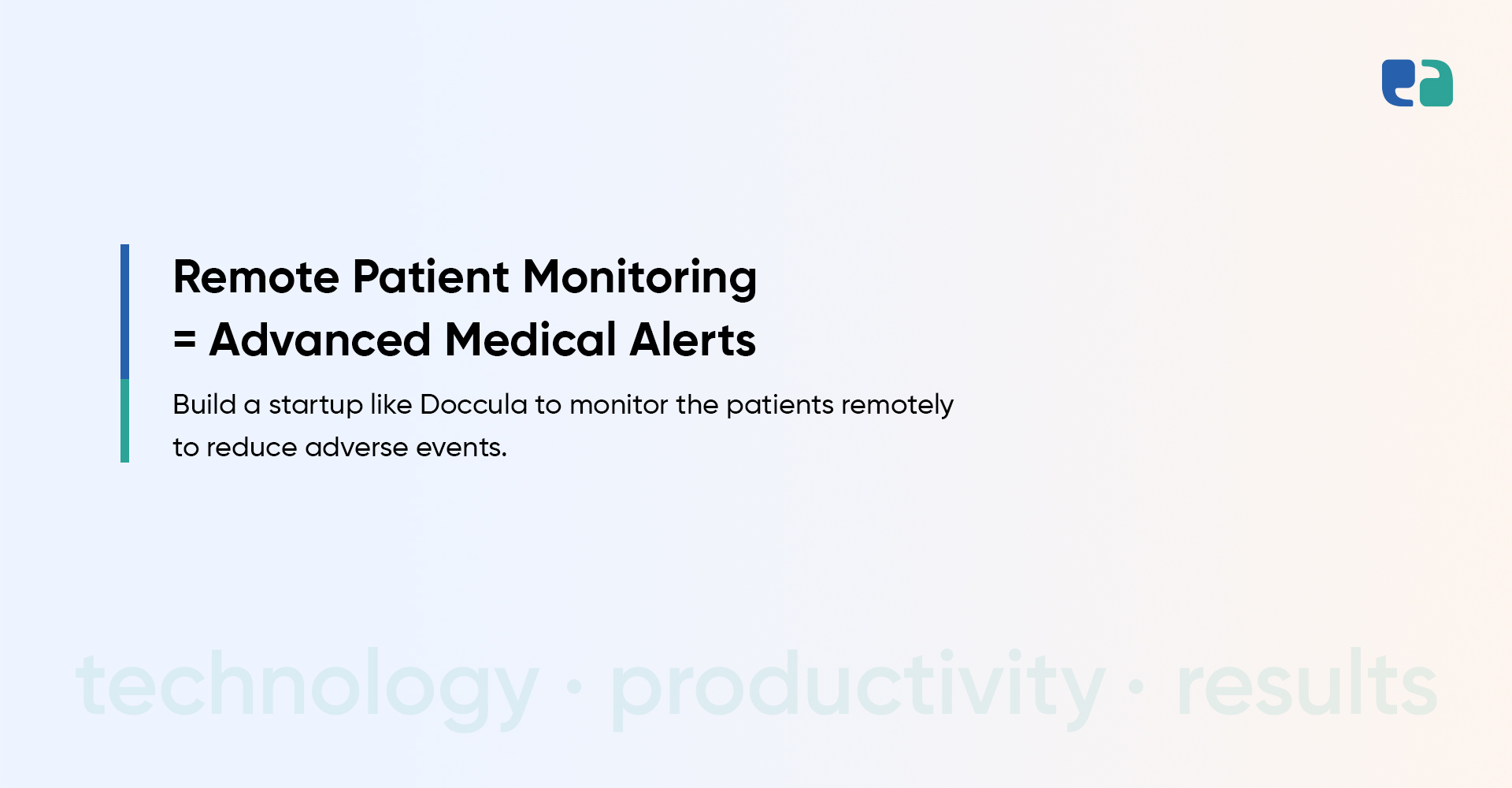Quick Summary- A new wave of digitization has hit the UK healthcare market, especially in care delivery, as NHS trusts reimagine hospital care with Doccla, a med-tech startup is focusing on providing care through Patient monitoring systems. But exactly, What is remote patient monitoring? Be patient, and all your questions will be answered once you reach the end of this blog. So, make sure to read it whole.
Digitization has become a common fold in healthcare, especially primary care. And the fact that the healthcare sector had started going paperless almost 10 to 15 years ago is enough to prove the significance of digitization.
Again, the birth of Doccla was driven by the pandemic, as we saw with previous innovations. It fared out that overloaded clinics required technology such as patient monitoring systems to construct ‘virtual stations’ to track the trips inside and outside the hospital.
So, there you go, Doccla, a health-tech startup, has secured $3.3 million in seed funding for its patient remote monitoring system venture. The funding was led by Speedinvest and Giant Ventures.
What is remote patient monitoring? and what does Doccla do?
Let me put it this way. Using predictive analysis (AI), a patient monitoring system allows hospitals to know when beds will be freed up by the patients remotely with the help of wearable medical devices, thus helping to alleviate snags in the system.
Doccla is a UK-based health-tech startup that helps patients remotely monitor hospital wards and in their homes.
It was founded by tech entrepreneur Dag Larrson and health entrepreneur Martin Ratz. Claiming to have achieved a 20% reduction in A&E and a 29% reduction in emergency admissions. Doccla has saved “thousands of bed days for the NHS.”
With securing funding of $3.3 million for the ‘virtual ward’ platform, the firm provides a remote patient monitoring system that allows health workers such as doctors, clinicians, and nurses to watch patients at home and provide individual feedback through text and video visits. Doccla says patients at home can also be measured.
With their plan to expand into the European healthcare market, the funds raised will be used to develop IoT/IoMT technologies and AI-based predictive analytics for journal record systems.
Says Dag Larsson, Doccla’s CEO and co-founder. “The care provider may make use of our end-to-end virtual ward services and are exceedingly difficult for them to overlook. Now, the NHS is facing a tough winter season, and our technology is developing to help carers.”
“We are unique in the industry as we support the whole journey of patients (e.g., all last-mile activities like logistics, customer service, and even pre-configured mobile phones). This has made us punch over our weight significantly, and we have achieved contracts with incredibly high patients and clinicians”.
Benefits of a patient monitoring system like Doccla
Actuated by the pandemic, Doccla helps caregivers shift the patient care from swarming hospitals to the home, reducing the cost and patients feeling more comfortable.
At the same time, it assists the NHS and the hospitals with the help of its predictive analysis to find hospital beds without any delays.
Here’s what a nurse using Doccla has to say about remote patient monitoring and its future
We got in touch with a nurse working with NHS trusts for this blog and recently started telemetry monitoring after Covid-19.
Sharing her experience, she said, “The ratio of staff to patient is quite less on virtual wards.”
In remote patient monitoring systems like Doccla, we still have doctors’ ward rounds with the remote process. The RPM kit is well-equipped with smartphones to make calls and visits via Microsoft teams, etc.
We are quite delighted to see patients in their own spaces and familiar surroundings, where they are not susceptible to hospital-bought infections. Patients are happy to take calls and quite welcoming towards the reassurances we offer as they are not disturbed by noises and other hospital hustle-bustle.
Ramping up the requirements on the NHS for continuous innovation. Patient monitoring systems such as Doccla are helping to maintain the primary healthcare potential.
“So far, the majority of staff and patients using this model of care have given positive reviews of the system.”
Start your own healthcare startup
We have been working with healthcare organizations for the last seven years. Our agile team, who invest their time in IoT and AI-based predictive analytics, has wise solutions to define any product structure.
For any product startup, the first thing is requirement gathering to documentation. We are a software and mobile app development company, but we believe that’s a second phase. The foremost thing is the clarity of structure.
We would be happy to talk with you if you are looking to create startup or healthcare solutions.




